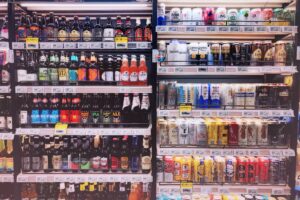Introduction
The onset of the COVID pandemic in March 2020 brought about a number of changes in all our lives. The biggest by far were the supply chain issues. Inventory and supply were restricted, and for a time hoarding became the new norm. Now that the pandemic has ended one would expect things to return to normal, and in some respects they have. However, consumers are awakening to a world characterized by fewer options and fewer choices.
“Any Colour So Long as it is Black”
Henry Ford purportedly once told a sales meeting at his company that “Any customer can have a car painted any color that he wants so long as it is black”. Supposedly, the rationale for this statement had a lot to do with simplification.
A lot has changed since 1922 when Ford made that statement. Consumers have evolved, and people have pressed manufacturers for more choice and customization. More choice was associated with broader tastes. Expanded options was construed as a recognition of individual preferences, and the fact that people have different preferences, different likes, different tastes, and different opinions. Yet since the pandemic it seems things have shifted, and choices and options are more restricted than ever.
Consider the following:
- A friend of mine went out recently to replace his aging land-cruiser. When he went to the car dealership there was only one sales representative in attendance. His range of choices was much narrower. Whereas before his dealership presented him with six different trim options, now he was given only three. As for the colour palette, it was reduced from nine to five. Whereas fifteen years ago he could choose between a sedan, a coupe, a sports car, a station wagon, or a sport utility vehicle, today, his choices are almost entirely SUVs.
- In the city where I live there used to be five drugstores in my neighbourhood. Now there are two. At least three variety stores have disappeared. There is only one gas station nearby. A major national retailer recently announced it is shutting one of their two outlets in my city.
- Prior to the pandemic I used to go to a big box grocery retailer. There were usually nine to twelve different varieties of cereal. On any given week the range now is three to four. The same is typical of other products.
The reduction in options and choices isn’t just confined to packaged goods selection. During the pandemic part-time and partial load professors at the college where I teach were juggling three or four courses each term both in person and online. In the post-pandemic world schools are now reducing the number of course sections while increasing class sizes. Classes that used to have 24 or 28 students have morphed into 42 to 48 per section. Larger sections mean fewer professors teaching more classes even with an increasing student population. Part-time professors are expendable, and full-time professors are burning out due to an ever-increasing workload.

A variety of options and choices are at the heart of Western society, but what does it mean when the range of options becomes more limited or constrained? (Picture courtesy of Junjie Xu and Pixels)
So Much for Imagination and Creativity
As a coach and a professor what is most disturbing for me is the way in which this is paucity of options and choices is now reflected in people’s thought processes. Since the pandemic I have noticed that many of my clients are reluctant to consider more than one or two options when evaluating a decision. This “either” “or” thinking can be extremely limiting in that it precludes the search for original, unique or unorthodox approaches.
When I was teaching an introductory course in Human Resources Management I referred to a case study on recruitment. This case involved a start-up opportunity in a company in Western Canada. Students were asked to identify a number of different recruitment mediums to fill assorted position vacancies ranging from clerical to scientific to senior management, and also, to provide a rationale for their recommendation. When I first taught the case in a class in 2018 students generated a whole range of different recruitment modes ranging from contract hiring to “cold calling” to use of search firms to advertising in scientific journals. Four years later when I gave the same case to my class the only option most could generate was “social media”.
The pandemic did a number on many people’s mental health. As social beings we are conditioned to interacting with others. Being cloistered at home with limited chances to meet and converse with others was, at first, unusual, but as time went on it became socially damaging. Healthy discourse and interaction underscored by mutual respect and good will fosters debate, communication and the consideration of alternate viewpoints. With so many of us isolated in place that exchange was lost. What prevailed was the predominance of whoever talked the loudest and drowned out other perspectives.
A Final Thought…
Everywhere it seems we are bombarded with messaging extolling diversity and inclusion. Yet, how can you have diversity in a world with fewer choices and a greater emphasis upon conformity? If choices and options are assumed to be good, and are a testament to variety and the lack of uniformity, then how can fewer choices and options be perceived positively? If, as Henry Ford once implied, there is only one colour option, how can that be construed as reflective of different tastes and choices? If homogeneity is occurring due to simplification and cost containment, how does that promote selection and choice?
Some would argue that these apparent contradictions are inevitable, and that tolerance of ambiguity is just a reality of life. They may be right. However, for me it’s just another manifestation of an increasingly sterile environment in which variety, options and choice have sadly, been sacrificed on the altar of standardization and uniformity.
